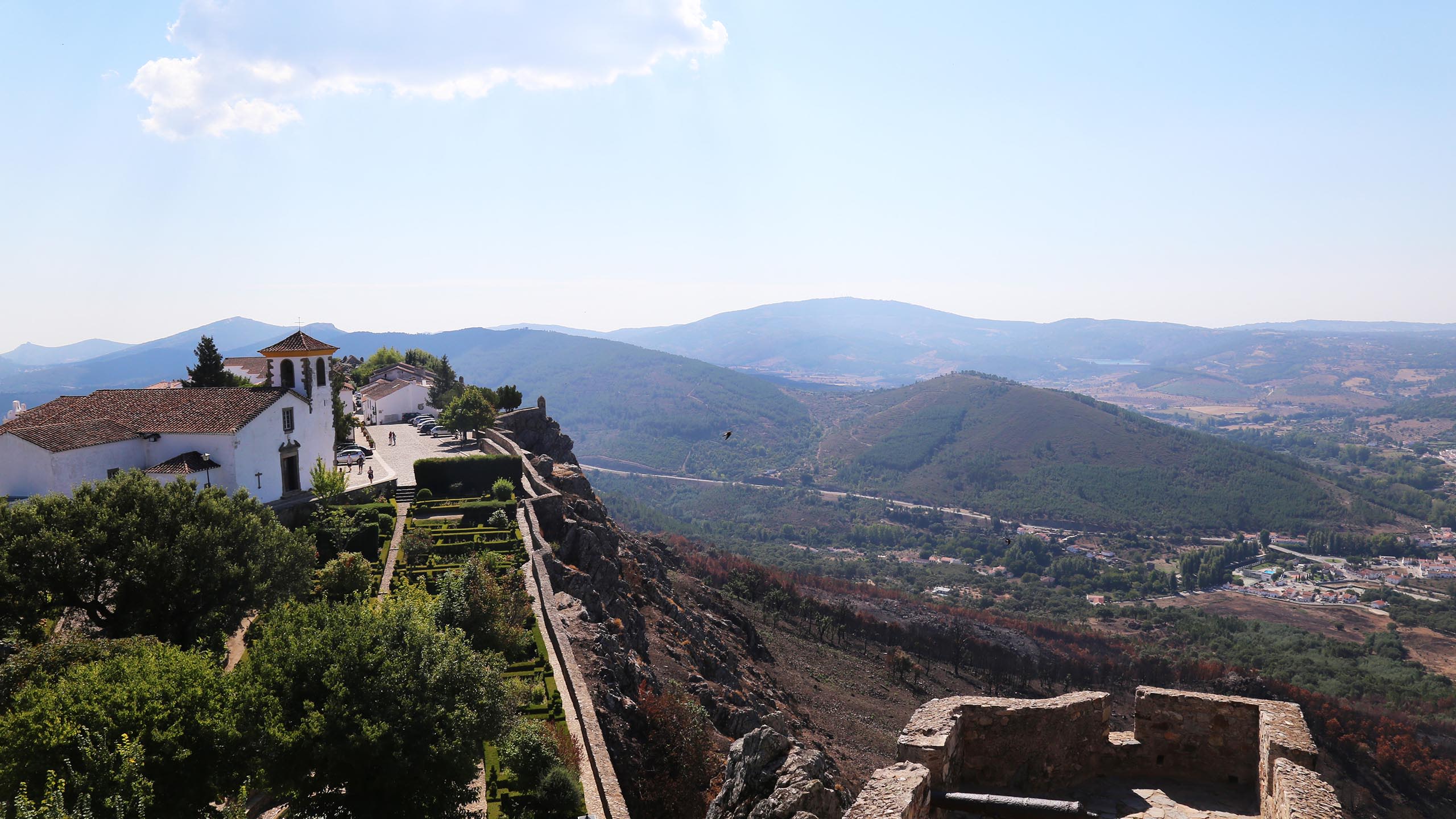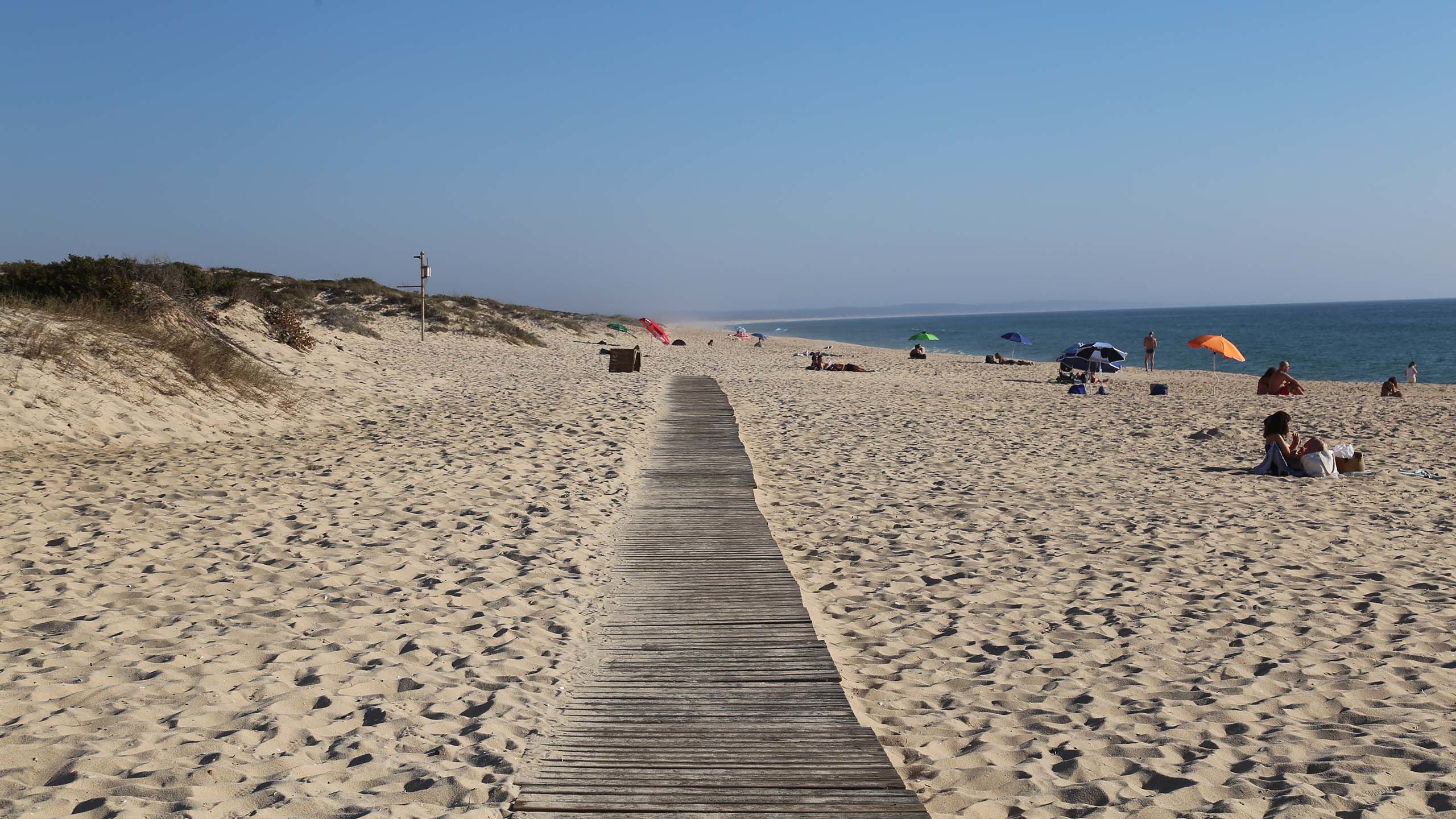Under-the-Radar Portugal: A Guide to the Alentejo Region
Avoid overtouristed parts of Portugal by heading to the country’s peaceful Alentejo region

I was told my late September 2018 visit to Portugal coincided with the country’s shoulder season. But when I arrived at Lisbon Airport, the place was packed — and numerous major hoteliers in Lisbon, Porto and the Douro Valley told me that they were fully booked for the first time so late into the year. One top luxury property in the Douro told me that they had no openings through November — even after tripling room prices.
Last year, Portugal broke records for visitation numbers, and it’s fair to say that 2019 will likely follow suit. According to Travel Leaders Group, Portugal is one of the top nine emerging destinations for travelers flying from Los Angeles International Airport.
But, fortunately, Portugal has a secret region up its sleeve where the prices and tourist count are refreshingly low.
Although it is the biggest region of Portugal — occupying about a third of the country — the Alentejo has the fewest number of residents and visitors.
Its peaceful ambiance makes it an attractive option, as does its good looks. The Alentejo has been compared to Tuscany thanks to its medieval walled towns overlooking rolling hillsides dotted with agricultural land and vineyards.
Alentejo translates to “beyond the Tagus (River).” It stretches south and southeast of Lisbon into central Portugal, bordering Spain to the east and the Algarve, another Portuguese hot spot, to the south.
In addition to wide-open spaces, castle-topped mountains, a wild coastline, an abundance of cork trees, a rich history and a celebrated wine and cheese tradition, the Alentejo is home to some of the warmest folks in Portugal. Less inundated by tourists, they truly appreciate the visitors who come their way.
The Alentejo is also conveniently linked by a series of highways, making a road trip through the region relatively easy. I rented a car upon arriving at Lisbon Airport, spent four days in the region and dropped off my rental car upon arriving in the Algarve.
Following are a few highlights worth checking out during a visit to the Alentejo.


Marvao

Sintra, Portugal, is known for its Castle of the Moors, and one of Lisbon’s top landmarks is Sao Jorge Castle. But the Alentejo is home to many other equally impressive medieval castles. A lack of crowds is the defining difference between the castles in and around Lisbon versus those found in the Alentejo.
A few castle-topped towns worth checking out include Castelo de Vide, Estremoz and Monsaraz. But my favorite is Marvao, one of the highest fortress-topped towns in the entire region. After driving up the hill that leads to the parking lot outside the walled town, I entered the gates and immediately came upon an information desk. The woman I found there was perhaps the friendliest information bearer I’ve encountered, immediately embracing me and sharing her must-dos in Marvao.

Marvao is one of several castle-topped medieval towns in the Alentejo. © 2019 Mindy Poder
Marvao is one of several castle-topped medieval towns in the Alentejo. © 2019 Mindy Poder
The crowning highlight is Marvao Castle, which dramatically emerges from a slab of rock over a gently sloping landscape. Founded in the 13th century, the medieval structure features a beautiful English-style garden, a former cistern and numerous battlements and towers from which to enjoy the unobstructed view.
Where to Eat: There are a few cafes in Marvao with epic vistas, but the area’s best culinary experience is at the popular Gadanha Mercearia, a cafe and small market, in Estremoz. Innovations include a dish composed of goat cheese, pear, walnuts, honey and thyme ice cream, as well as a fresh tomato salad made even more refreshing thanks to a topping of slushed ice.

After exploring Estremoz, another town with a castle, enjoy a gourmet meal at Gadanha Mercearia. © 2019 Mindy Poder
After exploring Estremoz, another town with a castle, enjoy a gourmet meal at Gadanha Mercearia. © 2019 Mindy Poder
Evora

A UNESCO World Heritage Site, Evora is the capital of the Alentejo and the busiest area in the region. The walled, cobblestoned town delivers on architecture, including the Roman ruins of the Temple of Diana, which are starkly juxtaposed by whitewashed homes, 16th-century churches and royal buildings. And it’s not a visit to Evora without a stop at the Chapel of Bones, an infamous room composed entirely of skulls and bones — all for the purpose of reminding onlookers of their eventual shared fate. For a view of the city and its surroundings, climb the steps to the spired rooftop of the medieval Cathedral of Evora.
Monoliths and other impressive rock sites are heavily concentrated in the region. At sunset, check out Almendres Cromlech just outside of Evora. As the sky changes colors, the site — which is believed to have been used as a religious setting as far back as 6,000 B.C. — becomes even more mystical.
Where to Eat: When in Evora, take a break from sightseeing at Pateo, a lively courtyard cafe serving some of the best salads and tapas in the area.

Those who can climb steps should visit the rooftop of the Cathedral of Evora, which offers a panorama view of the UNESCO World Heritage Site and its surroundings. © 2019 Mindy Poder
Those who can climb steps should visit the rooftop of the Cathedral of Evora, which offers a panorama view of the UNESCO World Heritage Site and its surroundings. © 2019 Mindy Poder
Comporta

The coast of the Alentejo is home to numerous sleepy fishermen villages, such as Comporta. While the beach town remains a perfect place to lay out on white sand or to enjoy cocktails and seafood from one of two beachfront cafes, it has received its share of buzz for being a hideaway for celebrity designers and A-listers, such as Madonna, designer Philippe Starck and shoe icon Christian Louboutin.
Indeed, there are hints of its part-time residents, including a yoga studio, a few designer shops and Sublime Comporta, a high-end luxury resort just outside of town.
Where to Eat: Forget about it all — and watch an epic sunset — when lounging at beachfront Comporta Cafe, home to tasty rice dishes (a specialty of this rice-producing area) and a superlative white-wine sangria.

Balance sightseeing with time at the beach, especially if visiting the laid-back but posh Comporta. © 2019 Mindy Poder
Balance sightseeing with time at the beach, especially if visiting the laid-back but posh Comporta. © 2019 Mindy Poder
Vicentina Coast

Backpackers and active travelers love the Alentejo for its Rota Vicentina, a hiking system that hugs the area’s craggy coastline and totals 280 miles of trails that were once routes used by fishermen and/or pilgrims. On this wild natural coastline, no highway closely parallels the coast, so hiking this relatively untouched and often sandy route is the best way to experience constant beachfront views.
Nonetheless, drivers can take detours from the nearest highway to stunning cliff-top settings, such as Cabo Sardao, a scenic headland area ideal for a short walk. Or, they can call it a day at numerous small beach towns, such as Praia da Zambujeira do Mar, where an unofficial Thai-massage booth offers low-cost treatments in the sand.
How to Get There: Though the Alentejo is large, it is easy to navigate by car due to well-maintained highways that experience little to no traffic. Having a data plan that can power mobile-phone map systems is recommended: There are not always clear roadway signs, and there are many roundabouts to navigate. Be aware that there are numerous toll roads that charge anywhere from $2 to $9 per visit. Also, gasoline in the region is not cheap.

Still undeveloped and wild, the stunning Vicentina Coast is a beloved destination for multiday beachfront trekking. © 2019 Mindy Poder
Still undeveloped and wild, the stunning Vicentina Coast is a beloved destination for multiday beachfront trekking. © 2019 Mindy Poder
Where to Stay

The Alentejo is not home to bloated beach resorts or crowded urban hotels. Here, travelers will find mainly rustic bed-and-breakfasts and historic inns. Evora, which attracts the most tourists, possesses the biggest and finest hotels in the region — but most of them are boutique as well. Check out Imani Country House, which is a 15-minute drive to Evora and a five-minute drive to Almendres Cromlech.
A drive up a road past grazing cows and not much else sets the tone at this agriturismo-like property, while an iron gated fence tips off visitors that they’re in for an elevated experience. The pace here is slow, and the amenities are ideal for meeting relaxation goals. There are three pools for seven guestrooms — great odds for those in search of beautiful, private spaces. Guestrooms are modern and streamlined but with dashes of artsy quirk found throughout the property. For example, one might find red nightstands and a chunky red phone against an otherwise all-white color palette.
The staff is lovely, and they work hard. They are happy to make dinner reservations, provide tips on sightseeing in Evora and cook made-to-order omelets — a luxury in the Alentejo, where most breakfast buffets are strictly continental and don’t serve hot food. Here, they’ll treat you like a special guest, which is one of the many perks of traveling to the Alentejo.
